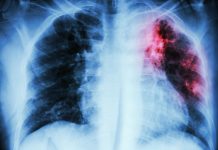Recent revisions to guidelines for people with hypertrophic cardiomyopathy (HCM) aim to clear up confusion about exercise recommendations
HCM is an inherited heart condition that causes the heart muscle to thicken, leading to breathlessness and chest pain. Affecting approximately 1 in 500 people, many cases of HCM remain undiagnosed.
Despite previous concerns, new guidelines show the importance of exercise for people with HCM.
Updates guidelines for people with HCM
The updated guidelines, published in the American Heart Association journal Circulation, stress that mild to moderate recreational exercise benefits those with HCM.
Experts, including Dr. Steve Ommen, medical director of the Mayo Hypertrophic Cardiomyopathy Clinic, advocate for at least 150 minutes a week of moderate-intensity aerobic exercise or 75 minutes of vigorous aerobic exercise, aligning with general physical activity recommendations.
The shift in the new guidelines is the view on vigorous exercise. The update suggests that, with proper monitoring and annual evaluations, people with HCM can safely engage in vigorous activities. This represents a shift from older guidelines that limited HCM patients to low-intensity sports due to fears of sudden cardiac death.
Safely exercising with HCM
Recent studies support this change. Research shows that vigorous exercise does not significantly increase the risk of death for people with HCM compared to moderate or no exercise. One study involving 1,660 people with HCM found no heightened risk of death from vigorous exercise. Another study, focusing on elite athletes with genetic heart diseases, showed that with thorough evaluations, these athletes could safely return to their sports.
The guidelines now recognise that HCM affects individuals differently, for most people with HCM, universal bans on vigorous physical activity or competitive sports are no longer recommended. Instead, the emphasis is on individualised assessments and shared decision-making between patients and doctors.
Athletes with HCM are advised to undergo annual evaluations and consultations with HCM specialists to determine safe physical activity levels. Factors like age, family history, heart scans, and exercise stress test results help doctors assess the risks and provide tailored exercise recommendations.








